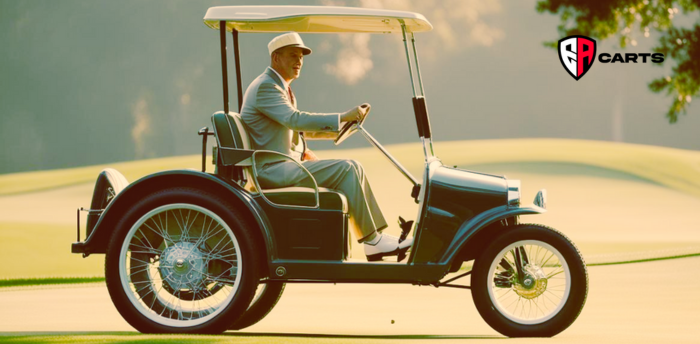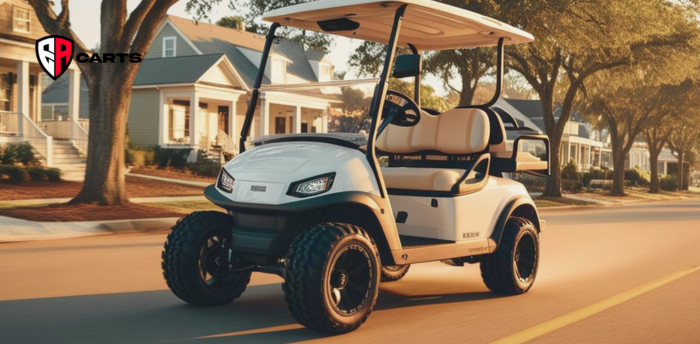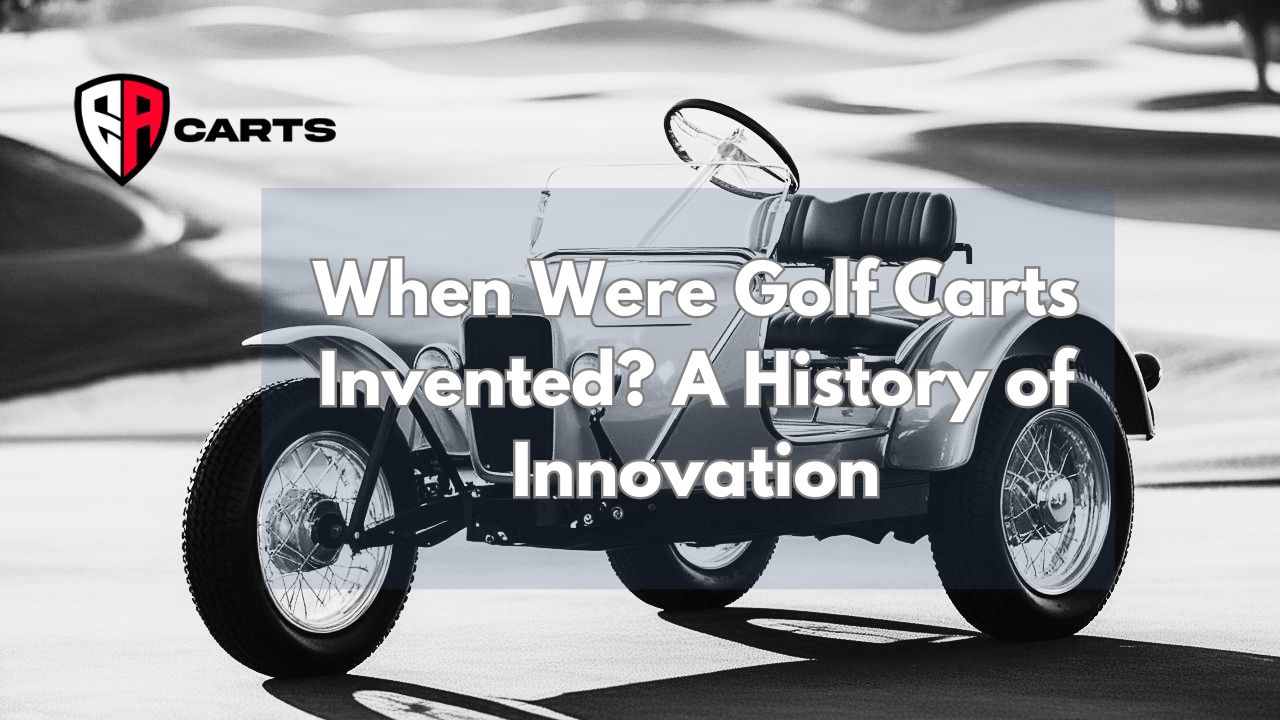Thinking about getting a golf cart? Their history might surprise you. It’s not just about golf; it’s a story of ingenuity and evolution. Let’s explore the question, “When were golf carts invented?” and dive into this fascinating journey.
Table Of Contents:
- The Surprising Origins: When Were Golf Carts Invented?
- From Fairways to Streets: The Expanding Role of Golf Carts
- Golf Carts in the 21st Century: When Were Golf Carts Invented With Modern Features?
- Conclusion
The Surprising Origins: When Were Golf Carts Invented?

Many believe the golf cart was invented in the 1930s. The truth is, its origins go back further.
Before the Fairway: Early Adaptations
In 1932, Lyman Beecher used a two-caddie-pulled rickshaw at the Biltmore Forest Country Club. This wasn’t for leisure; Beecher’s poor health made walking the course difficult. Later, the rickshaw was upgraded by adding two more wheels and car batteries which practically converted it to an electric vehicle.
Around the same time, J.K. Wadley saw electric carts used in Los Angeles grocery stores. He envisioned their potential on golf courses, giving disabled people a new way to enjoy golf.
These stories reveal a history of adapting existing technology. Multiple creative minds likely worked independently to solve similar problems.
The Electric Spark and Gas Guzzlers: When Were Golf Carts Invented for Real?
The 1950s provided a more definitive answer to “When were golf carts invented?”. In 1951, Merle Williams of the Marketeer Company introduced the first commercial electric golf car. These three-wheeled electric carts addressed accessibility issues, partly influenced by gasoline rationing during World War II.
Around the same decade, R.J. Jackson, an oil tycoon, sought to patent the first gasoline-powered golf cart called the “Arthritis Special” and marketed toward disabled golfers. However, it was not well received because it was noisy and produced smoke.
While influenced by post-war gasoline rationing, these carts never reached the popularity of electric models due to noise and fumes. This marked a key point in the development of golf cart brands.
Then in 1954, E-Z-GO launched its electric golf cart that uses a 36-volt battery, which was used by B-17 bombers’ wing flaps. The same year LEKTRO also began producing their own electric-powered golf cart.
From Fairways to Streets: The Expanding Role of Golf Carts

Initially, golf carts aided elderly or disabled golfers. As golf cart technology advanced, so did the cart’s versatility. The 1970s were a turning point for the golf cart industry.
Beyond the Green
Manufacturers realized golf carts suited small communities. Places like The Villages in Florida adopted golf cars as primary transportation. This led to widespread acceptance of golf carts beyond golf courses.
The Rise of Customization: Reflecting Personal Style and Culture
The availability of gas-powered golf carts helped this trend. Though initially intended for golf and college campuses, homeowners embraced their practicality.
They began customizing golf carts with upgraded seats, paint jobs, mirrors, radios, and sunshades. Golf carts transformed into personal statements, prompting manufacturers to invest in research and development.
This spurred the creation of custom golf carts for various demographics and needs. Parts departments at golf cart manufacturers were busy fulfilling the rising demand.
Golf Carts in the 21st Century: When Were Golf Carts Invented With Modern Features?
Today’s models retain the basic design but boast advancements like GPS and improved efficiency. Some even incorporate AI for safety and collision prevention. Modern golf carts average better performance on a single charge. This innovation extends to utility golf carts for rough terrain.
| Feature | 1950s Golf Carts | Modern Golf Carts |
|---|---|---|
| Engine | Electric or Gas (noisy, inefficient) | Electric (quiet, efficient), Gas (improved), some even using solar-power options now. |
| Range | 18-27 holes per charge | 7-8 rounds per charge, even an entire full week of use in retirement communities |
| Features | Basic steering and controls, storage | GPS, digital displays, improved braking and suspension, safety features, customized options including personalized coloring and seats, lift kits, stereo, storage, custom lights and rims, enclosures |
| Use Cases | Primarily golf courses, some limited off-course use | Golf courses, personal transportation, resorts, gated communities, campuses, businesses, and beyond. |
Building Your Own Golf Cart
Some manufacturers like EA Carts let customers design their own golf carts. This lets buyers create a truly bespoke motorized cart.
Conclusion
The golf cart’s journey reveals adaptation and expansion. From necessity to recreation, its history showcases ingenuity.
Modern golf carts continue embracing innovation while staying true to their core values. The question “When were golf carts invented?” reveals our ability to adapt and grow. The American National Standards Institute now even maintains standards for these motorized carts.



